Gary sent in this interesting link – from a couple of years ago. At www.forbes.com/sites/trevornace/2017/01/21/welcome-rainbow-mountains-per… (and see also https://theculturetrip.com/south-america/peru/articles/the-discovery-of-… …). Ausangate Mountain in the Peruvian Andes – striped with colours ranging from turquoise and lavender to maroon and gold (or deep yellow). The mountain was holy to the Quechua people of Cusco and is still held in esteem. The Quechua make pilgrimage there for an annual festival even though it sits at an elevation of 6384m and is located 100km SE of Cusco. The area around the mountain is said to be a geological treasure house with granite cliffs and Cretaceous limestones (chalk, perhaps). It is thought volcanoes may have introduced various minerals into the Andes and minerology is said to be the cause of the colourations. Iron oxides are just one of the minerals that can produce reds and yellows – but there other minerals are responsible for the blue spectrum …
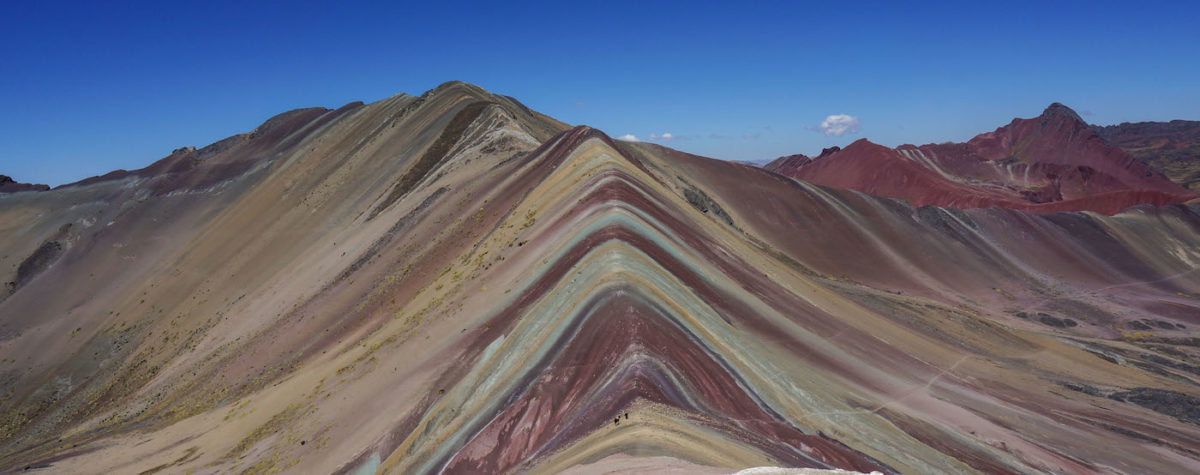
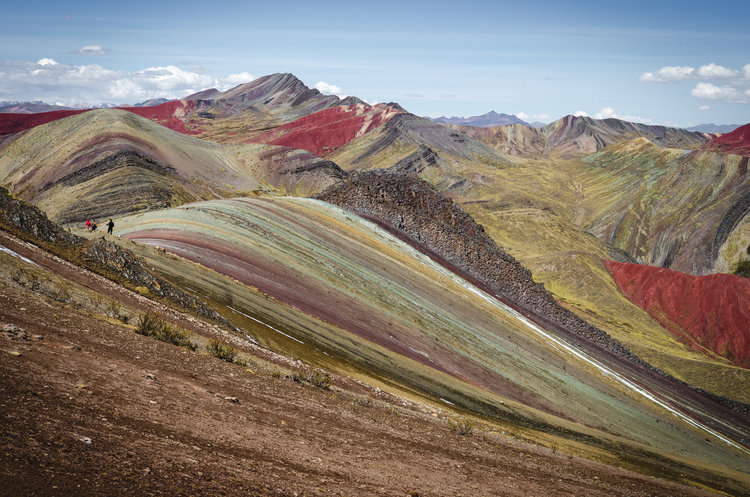 …
… 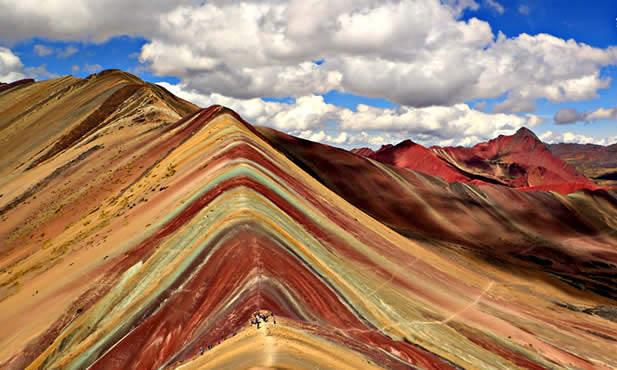 … In addition, tectonic processes have tilted the sedimentary layers on to their side, exposing a striped stratigraphy. However, the mountain is not all colours as the other side of it is white (snow I assume but could be the white limestone) …
… In addition, tectonic processes have tilted the sedimentary layers on to their side, exposing a striped stratigraphy. However, the mountain is not all colours as the other side of it is white (snow I assume but could be the white limestone) …
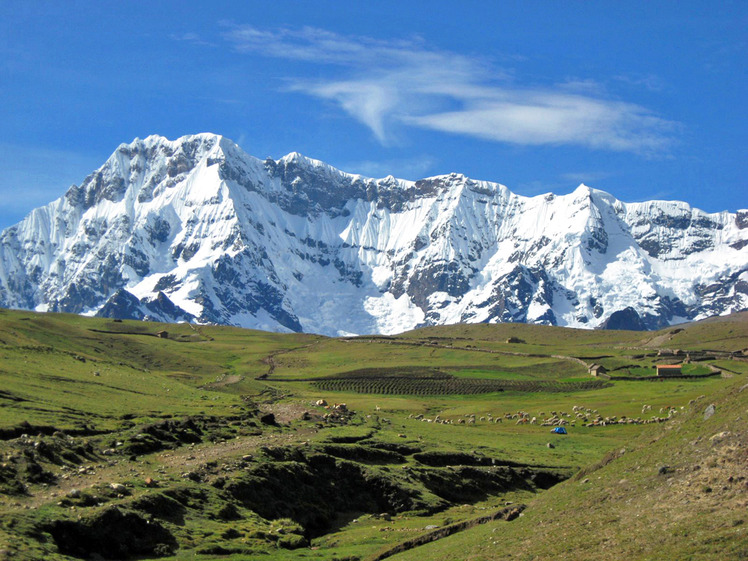 … One is reminded or the coloured sands of Alum Bay on the Isle of Wight (also in chalk country). The coloured sands are also turned on their sides. At Alum Bay iron oxides are to blame, we are told. See for example https://en.wikipedia.org/wiki/Alum_Bay …
… One is reminded or the coloured sands of Alum Bay on the Isle of Wight (also in chalk country). The coloured sands are also turned on their sides. At Alum Bay iron oxides are to blame, we are told. See for example https://en.wikipedia.org/wiki/Alum_Bay …
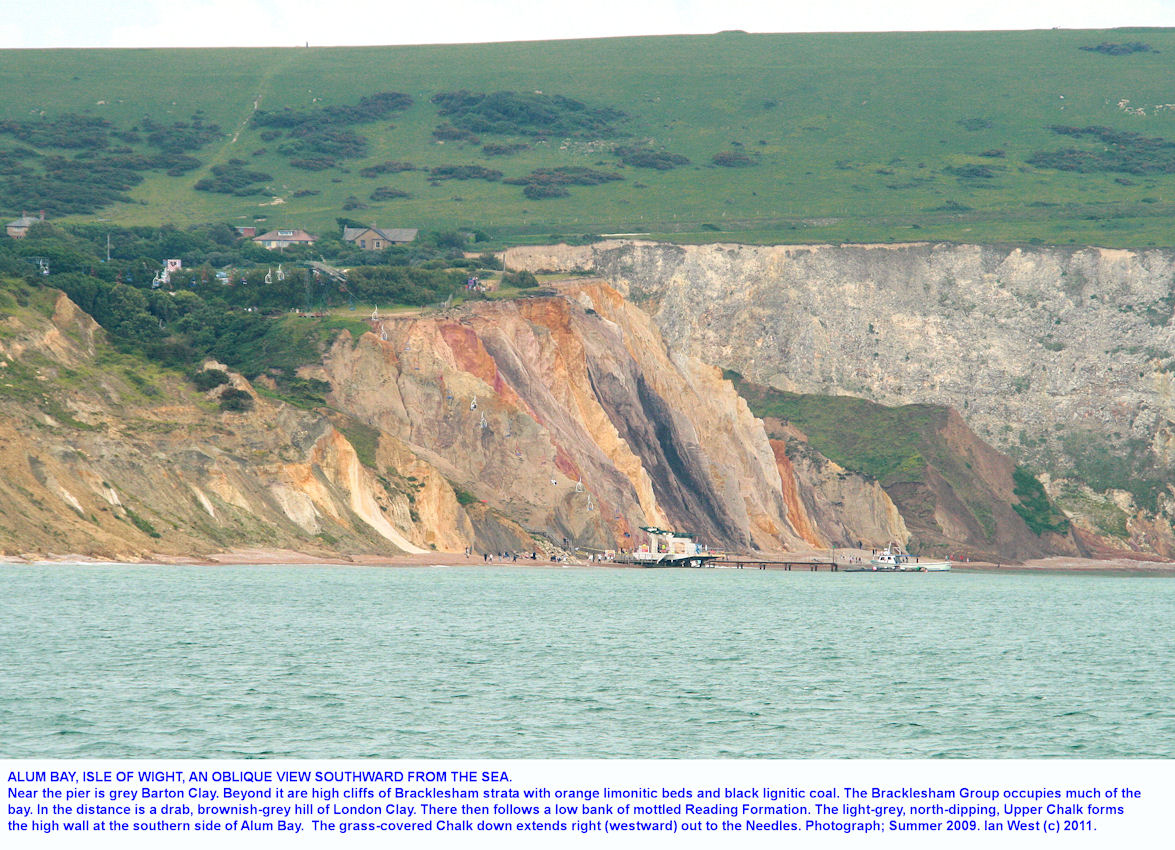 …
…
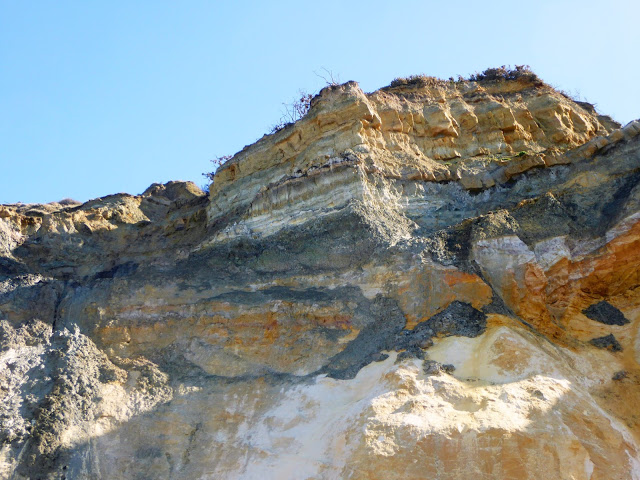 … Robert comments in an email – if we look at a map at www.bing.com/maps/?v=2&cp=13.870227~-71.302951&style=h&lvl=12&sp=Point.-… and pan to the east there is a crater shaped structure, surrounded by multicoloured deposits of which Ausangate and Rainbow are a part. Robert suggests these structures are wind blown deposits as described in the work of Andrew Hall and the late Michael Steinbacher (https://www.youtube.com/watch?v=p1JxlG2l6e0 – the crater being the site of an intense downdraught.
… Robert comments in an email – if we look at a map at www.bing.com/maps/?v=2&cp=13.870227~-71.302951&style=h&lvl=12&sp=Point.-… and pan to the east there is a crater shaped structure, surrounded by multicoloured deposits of which Ausangate and Rainbow are a part. Robert suggests these structures are wind blown deposits as described in the work of Andrew Hall and the late Michael Steinbacher (https://www.youtube.com/watch?v=p1JxlG2l6e0 – the crater being the site of an intense downdraught.
